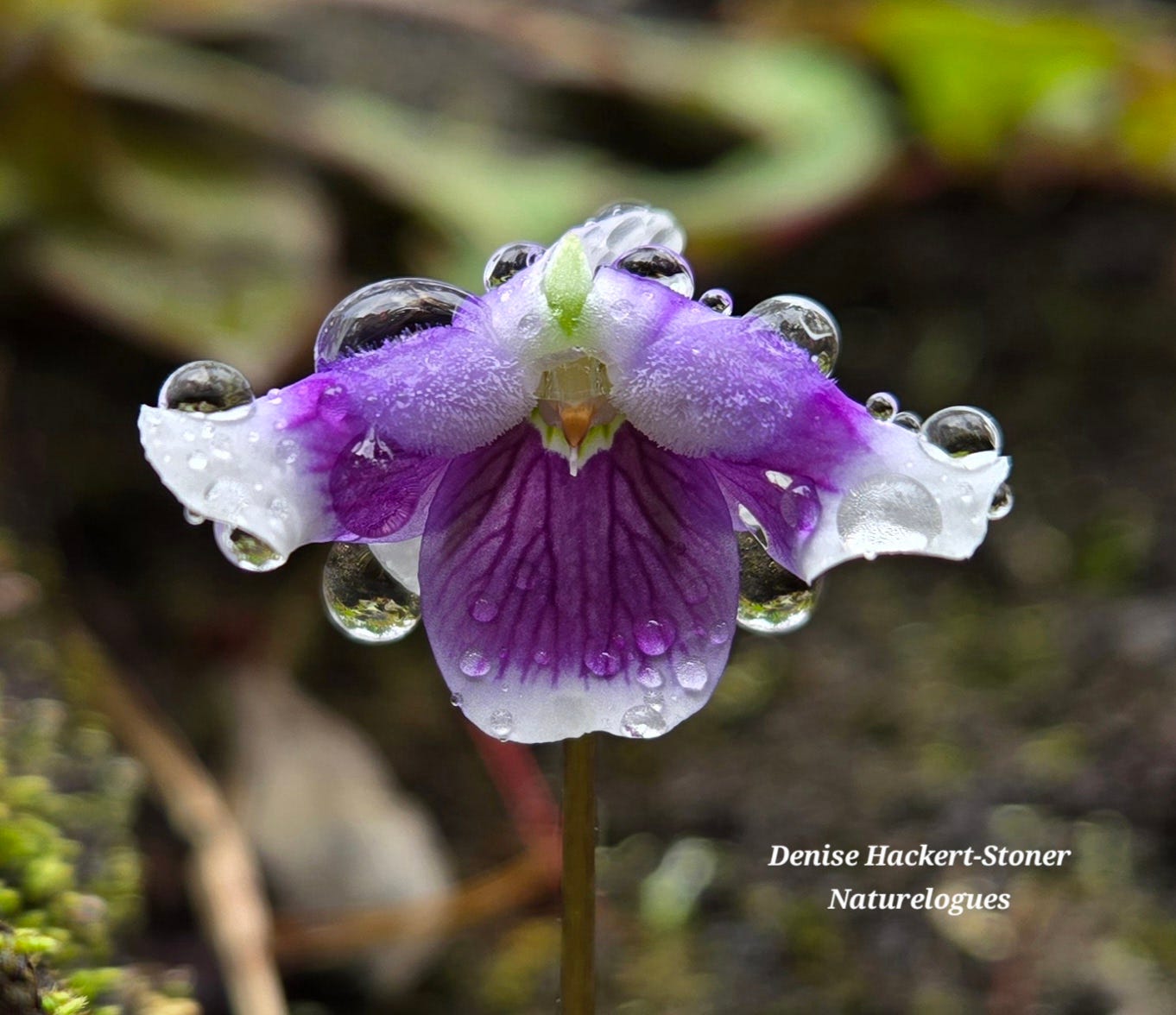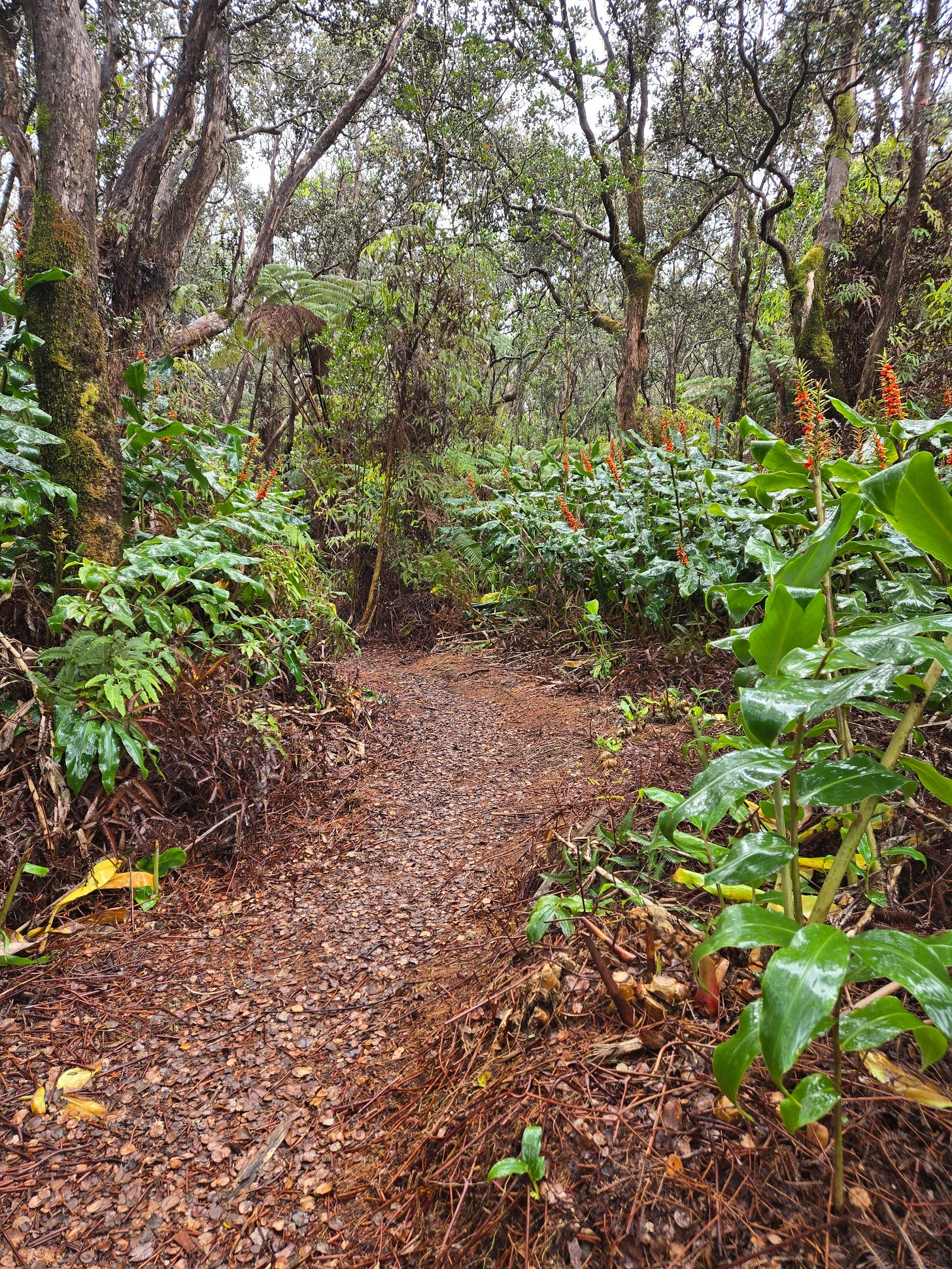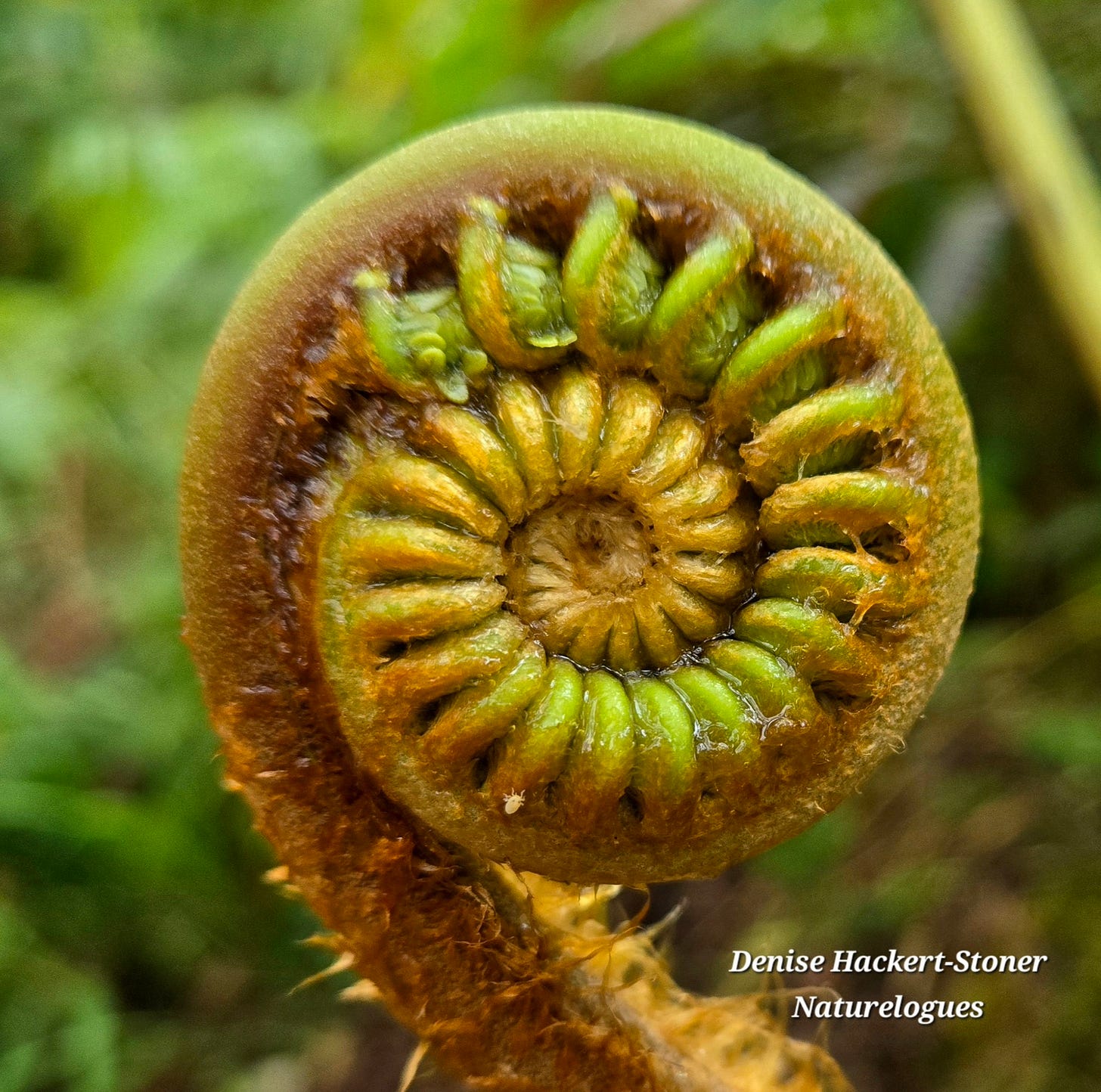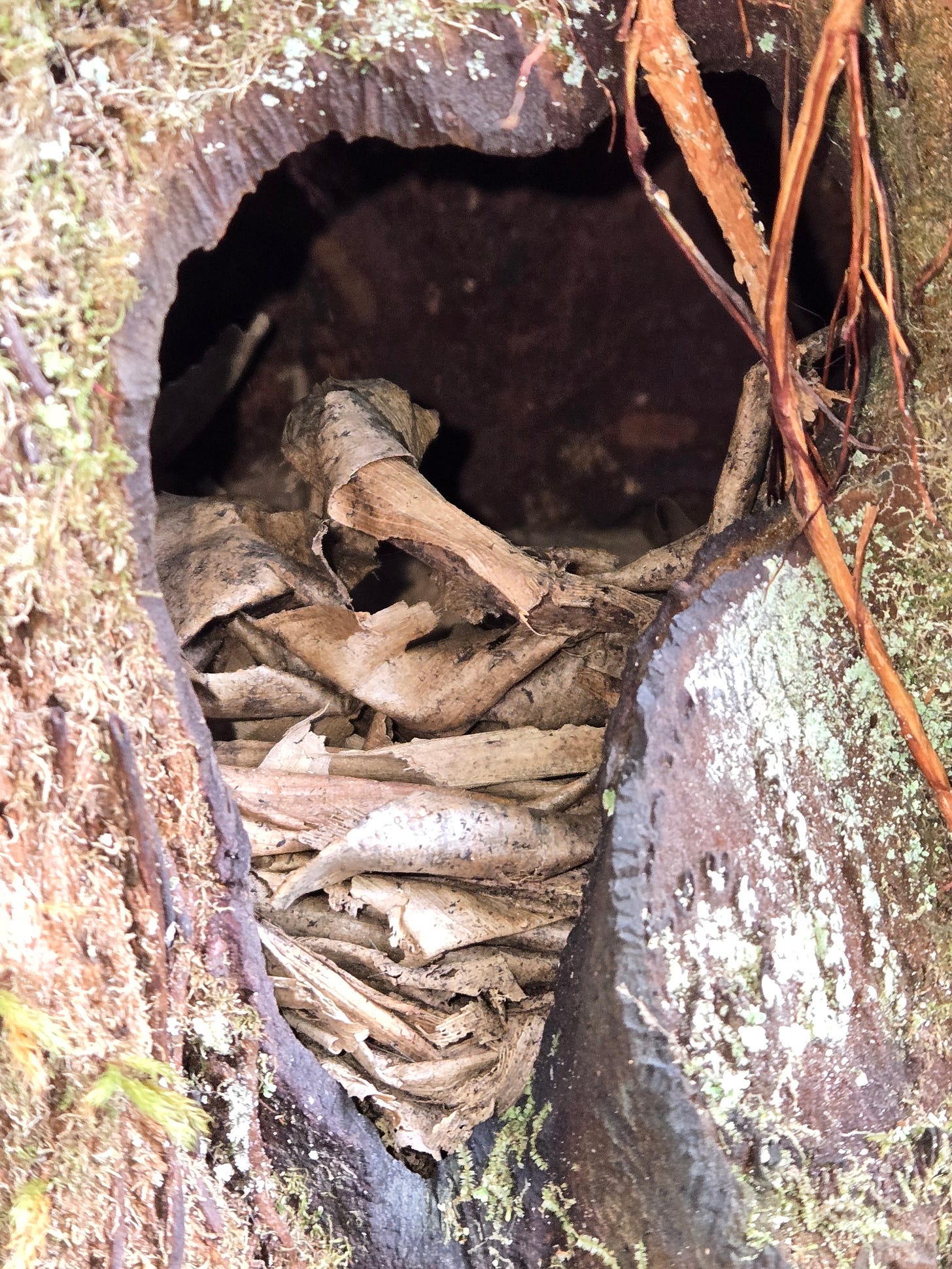We recently enjoyed a stay on the Big Island of Hawaii. Our home for almost two weeks was a lodge in the rainforest just outside Hawaii Volcanoes National Park, where we were serenaded by forest birds (both native and introduced), accompanied by pheasants, and surrounded by flowers. It was glorious.
Much to my delight, the owners of the lodge had recently had a nature trail put in. We loved rambling along this little trail, enjoying the flowers, the amazing tree ferns with their gigantic fiddleheads, and just exploring.
Because I find it hard to pass a tree cavity without peering in to see who might be home, I made an interesting discovery early on in our stay. Inside the small hole in the dead trunk of an old tree fern I thought I saw something. Something with fur. This was very interesting, as there are few mammals on the islands. I was able to grab a picture that revealed part of the animal; the furry top of a head and a rather large ear.
It just so happened that the trail steward was working that day. I showed him the picture and he said that the animal might be the Hawaiian Hoary Bat, a highly endangered species, and quite rare. You can imagine my excitement! I had found a rare and critically endangered animal right there in a dead tree fern!
Every time I walked on the trail I checked the hole for my new and very special friend. Until one day I was greeted with an empty hole. Curious, I worked my way to the back of the trunk, where I found a larger hole that opened to the same cavity. Here I clearly saw a large stack of dead leaves. Nest? Do bats nest in trees? Do bats even roost in trees? And don’t bats hang by their feet when roosting? Wait a minute, something wasn’t quite adding up here.
Scott suggested that my exciting find might not be a bat at all, but rather….. a rat! What? My “discovery” of a rare and endangered species might turn out to be nothing but a rat? I didn’t want to believe it. Maybe the Hawaiian bat is different. Maybe it roosts in trees. Maybe it collects leaves and builds nests, using…… what? Bats don’t have hands. My options were running out, and it looked pretty unlikely that I had my precious bat. But the hole was now empty, so there was still a glimmer of hope. Maybe the bat nests on material other animals gather?
Our trip to the Big Island was coming to an end. On my last foray on the nature trail I checked the hole one last time. There was someone home! I aimed my camera and shot.
Yes, that is definitely the tail of a rat. A Polynesian Rat (Rattus exulans). My exciting find was not the highly endangered Hawaiian Hoary Bat, but the common and despised Polynesian Rat. This little (4-6 inch) rodent accompanied the seafaring people of the south Pacific when they first came to the Hawaiian Islands over a thousand years ago. Since that time they have managed to take up residence on every one of the islands. They have chewed their way through crops of sugar cane, coffee, coconuts, and many more. They are one of the many threats to Hawaii’s native birds, as they predate both the eggs and young of many species.
So, my friend wasn’t what I thought it was. Not endangered, not protected, not beloved. But still….
This little rat, descended from an ancestor who just happened to have taken refuge in a wooden canoe bound away from home a thousand years ago, has found a way to survive here on these islands. It has built itself a cozy nest in the hollow of a dead tree fern in a corner of the rainforest of the Big Island where a curious woman just happened to be strolling. I was excited when I thought it was a bat. Why not now, that I know it to be something else entirely?
This little rat, like life itself, is what it is. No more, no less. It is here, taking what it needs from its environment, giving what it can. It cannot change its essential being, nor can I, nor can anyone. It is bound up in the life it has, just like the rest of us.
So fare thee well, little friend. Stay warm in your nest in the rainy forest. And maybe try not to eat too many birds?










He's still a furry little cutie pie!
I felt like I was there with you! Thank you for sharing! I can relate to the excitement and disappointment of thinking you've found something 'exciting' only to realize that it's 'common' or even considered to be a pest. I used to love watching house sparrows, until I learned that they were invasive. Funny how that knowledge changed my emotional reaction to them. But you're right. Life is life, and it is unfolding before our eyes. And even the most invasive species has a story to tell that is worth hearing. Thanks for writing one! Oh and your story made me wish that I were in a Hawaiin rain forest right now! :)